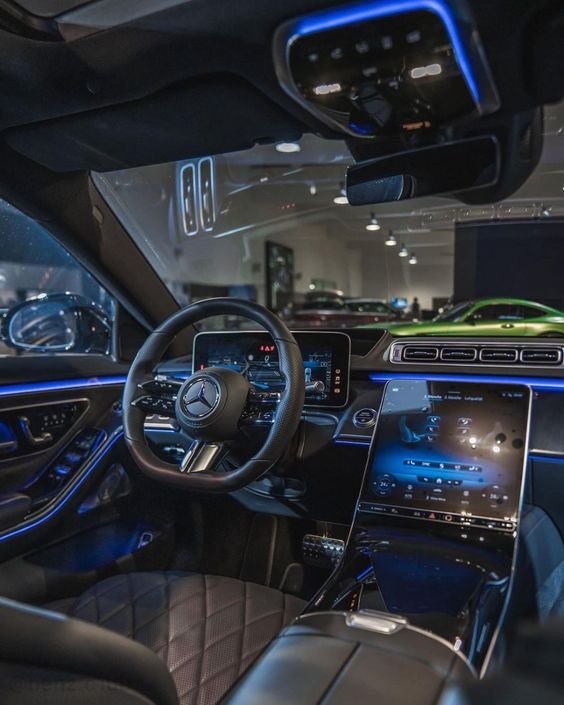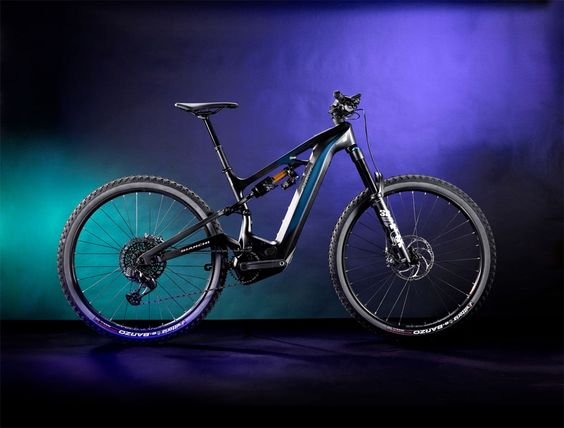
Artificial Intelligence (AI) is transforming the automotive industry, bringing about a new era of smart, autonomous, and connected vehicles. From self-driving cars to predictive maintenance, AI is revolutionizing how vehicles operate, interact with their environment, and enhance the driving experience. As technology advances, AI-driven innovations are making cars safer, more efficient, and more intuitive. Here are the top 10 breakthroughs in automotive AI that are shaping the future of mobility.
1. Autonomous Driving Systems
Breakthrough Overview: Autonomous driving systems are one of the most significant AI breakthroughs in the automotive industry. These systems use a combination of AI algorithms, sensors, cameras, radar, and LiDAR to enable vehicles to navigate, detect obstacles, and make driving decisions without human intervention. AI models, especially deep learning and computer vision, are critical for processing the vast amounts of data generated by these sensors in real time.
Key Players:
- Waymo: Google’s self-driving car project, now an independent company under Alphabet, is a leader in autonomous driving technology and has deployed autonomous taxis in select locations.
- Tesla: Tesla’s Full Self-Driving (FSD) software uses a neural network to improve its autopilot capabilities through over-the-air updates.
- Cruise: General Motors’ autonomous driving subsidiary focuses on developing self-driving taxis and delivery vehicles.
Impact: Autonomous driving technology aims to improve road safety, reduce traffic congestion, and provide mobility solutions for those unable to drive. As AI systems continue to improve, fully autonomous vehicles are expected to become more prevalent, transforming urban transportation and logistics.
2. Advanced Driver Assistance Systems (ADAS)
Breakthrough Overview: Advanced Driver Assistance Systems (ADAS) are a set of AI-driven features that assist drivers in making safer and more informed decisions on the road. These systems include lane departure warnings, adaptive cruise control, automatic emergency braking, blind-spot monitoring, and traffic sign recognition. AI algorithms help process input from sensors and cameras to provide real-time alerts and take corrective actions.
Key Players:
- Mobileye: An Intel subsidiary, Mobileye is a leader in vision-based ADAS technology and develops software and hardware solutions for numerous automakers.
- Bosch and Continental: These automotive suppliers provide various ADAS components, including radar, LiDAR, and cameras, integrated with AI algorithms.
Impact: ADAS is enhancing vehicle safety by reducing the likelihood of accidents caused by human error. These systems serve as building blocks for fully autonomous vehicles, contributing to a future where AI can significantly reduce traffic-related fatalities and injuries.
3. AI-Powered Predictive Maintenance
Breakthrough Overview: AI-powered predictive maintenance uses machine learning algorithms and data analytics to predict vehicle component failures before they occur. By analyzing data from sensors, diagnostic tools, and historical records, AI models can detect patterns and anomalies that indicate potential issues. This allows for timely maintenance, reducing downtime, improving vehicle reliability, and lowering maintenance costs.
Key Players:
- BMW: Utilizes AI to predict vehicle maintenance needs and provide timely alerts to owners.
- Tesla: Implements over-the-air diagnostics to detect and fix potential issues before they become problems.
- Uptake Technologies and Nauto: Provide AI-based platforms that offer predictive maintenance solutions to automotive fleets and manufacturers.
Impact: Predictive maintenance can significantly reduce the cost and inconvenience of unexpected breakdowns. For fleet operators, this technology offers the potential to minimize vehicle downtime and maximize efficiency.
4. AI-Based Voice Assistants and In-Car Personalization
Breakthrough Overview: AI-based voice assistants, like Amazon Alexa Auto, Google Assistant, and Apple Siri, are being integrated into vehicles to provide drivers and passengers with hands-free access to various functions, such as navigation, climate control, music, and communication. AI also enables in-car personalization, where the system learns the preferences and habits of the driver to offer customized recommendations and settings.
Key Players:
- Amazon Alexa Auto and Google Assistant: Integrated into several car models, offering voice-activated control over various in-car features.
- Cerence: Specializes in developing AI-powered voice recognition and in-car personalization solutions for automakers.
- Mercedes-Benz MBUX: A custom AI-based infotainment system that offers natural language understanding and personalized features.
Impact: AI-based voice assistants and personalization features improve the in-car experience by making it safer, more convenient, and tailored to individual preferences. These advancements enhance driver engagement and satisfaction while reducing distractions.
5. Computer Vision for Enhanced Safety and Navigation
Breakthrough Overview: Computer vision, a subset of AI, is used in various automotive applications to enhance safety and navigation. AI-powered cameras and image recognition algorithms can identify objects, road signs, pedestrians, and lane markings. This technology is critical for autonomous driving and ADAS, allowing vehicles to understand their surroundings and make decisions in real time.
Key Players:
- NVIDIA: Provides AI-driven computer vision solutions, such as its Drive PX platform, for autonomous vehicles.
- Valeo and Continental: Develop vision-based safety systems that integrate cameras and sensors with AI algorithms.
- Cognex and Aeye: Focus on computer vision technologies for detecting objects and enhancing navigation.
Impact: Computer vision is essential for creating safer vehicles that can detect and respond to their environment accurately. This technology is crucial for advancing towards fully autonomous driving and improving ADAS capabilities.
6. AI-Driven Traffic Management Systems
Breakthrough Overview: AI-driven traffic management systems use machine learning algorithms and real-time data from connected vehicles, sensors, and traffic cameras to optimize traffic flow, reduce congestion, and improve road safety. These systems can predict traffic patterns, suggest alternative routes, and dynamically adjust traffic signals to reduce delays and emissions.
Key Players:
- Waycare Technologies: Develops AI-based traffic management solutions for cities, utilizing data from various sources to optimize traffic flow and improve safety.
- Siemens Mobility: Provides AI-driven traffic management systems for smart cities, integrating vehicle-to-infrastructure (V2I) communication.
- IBM and Cisco: Offer AI-based solutions for traffic management and urban mobility.
Impact: AI-driven traffic management systems can significantly reduce traffic congestion, decrease travel times, and lower emissions. These systems contribute to creating smarter, more efficient cities by optimizing the use of existing infrastructure.
7. Automated Parking Solutions
Breakthrough Overview: AI-powered automated parking solutions, also known as autonomous valet parking, use a combination of AI algorithms, sensors, and cameras to allow vehicles to park themselves without human intervention. These systems can identify available parking spaces, navigate complex parking lots, and avoid obstacles.
Key Players:
- Bosch and Mercedes-Benz: Collaborated to develop the first fully automated valet parking system at the Mercedes-Benz Museum in Stuttgart, Germany.
- Valeo: Provides automated parking solutions that use ultrasonic sensors and cameras integrated with AI.
- Tesla: Offers a Smart Summon feature that allows cars to autonomously navigate parking lots to the owner’s location.
Impact: Automated parking solutions save time and reduce stress for drivers, particularly in crowded urban areas. They also optimize parking space usage, which can be valuable for cities looking to manage limited parking resources efficiently.
8. AI for Electric Vehicle (EV) Battery Management
Breakthrough Overview: AI is playing a crucial role in managing the performance, efficiency, and lifespan of EV batteries. AI algorithms optimize battery usage by predicting energy needs, managing charging cycles, and monitoring battery health. This helps extend battery life, improve range, and enhance overall vehicle performance.
Key Players:
- Tesla: Uses AI to optimize battery performance through its Battery Management System (BMS) and over-the-air software updates.
- General Motors: Leverages AI to enhance the performance and lifespan of its Ultium batteries in its electric vehicle lineup.
- QuantumScape and Solid Power: Employ AI-driven research to develop advanced solid-state batteries.
Impact: AI-driven battery management systems help maximize the range, efficiency, and longevity of electric vehicles. This is critical for enhancing consumer confidence and accelerating the adoption of electric vehicles.
9. AI in Supply Chain and Manufacturing Optimization
Breakthrough Overview: Automakers are using AI to optimize supply chain management, production processes, and quality control. AI algorithms analyze vast amounts of data from various sources, such as supplier information, production schedules, and real-time inventory levels, to predict demand, minimize disruptions, and improve efficiency.
Key Players:
- Toyota: Utilizes AI-driven production systems to enhance efficiency and reduce waste in its manufacturing plants.
- Volkswagen: Implements AI in its factories to streamline production processes and improve supply chain resilience.
- BMW: Uses AI for predictive maintenance and quality control in its manufacturing facilities.
Impact: AI-driven supply chain and manufacturing optimization help automakers reduce costs, improve production efficiency, and maintain high-quality standards. This contributes to more sustainable manufacturing processes and enhances overall competitiveness.
10. AI for Vehicle Cybersecurity
Breakthrough Overview: As vehicles become more connected and autonomous, cybersecurity becomes a critical concern. AI is being used to enhance vehicle cybersecurity by detecting and responding to cyber threats in real time. Machine learning algorithms can identify unusual patterns of behavior, detect anomalies, and respond to potential threats before they compromise vehicle systems.
Key Players:
- Upstream Security: Provides AI-based cybersecurity solutions for connected and autonomous vehicles, focusing on threat detection and prevention.
- GuardKnox and Argus Cyber Security: Develop AI-driven platforms to protect automotive networks and electronic control units (ECUs) from cyberattacks.
- Karamba Security: Offers AI-based solutions for in-vehicle cybersecurity, protecting against malware and hacking attempts.
Impact: AI-driven cybersecurity solutions are crucial for protecting the growing number of connected vehicles from cyber threats. As cars become more connected and autonomous, robust cybersecurity measures will be essential to ensure driver safety and data privacy.
Conclusion
AI is revolutionizing the automotive industry, bringing numerous breakthroughs that are enhancing safety, efficiency, and the overall driving experience. From autonomous driving and ADAS to predictive maintenance, automated parking, and vehicle cybersecurity, AI is helping create smarter, safer, and more sustainable vehicles. As AI technology continues to advance, its impact on the automotive sector will only grow, paving the way for a future of intelligent mobility solutions.







